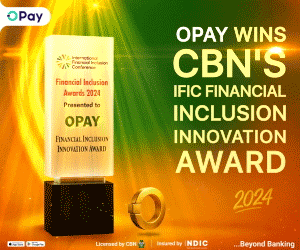Typically, the foundations for successfully raising capital for a startup are condensed into its business fundamentals and its overarching idea.
Essentially, if the Plan is solid, the Route to Market strategy is robust, and the Market Need, pressing, then the Management Team, Market Size, Operations systems, Checks and Balances are sound, and chances are there’s money out there to be willing invested in your business.
Not only does a successful outside investment into the company offer both you and your business a sense of accomplishment and direction, but it also validates others’ belief in your product offerings and opportunities.
Exciting as the money search and possible investments into your venture might be, however, it is equally just as threatening. You may also wish to read.
Surreptitiously built into the process of capital raises are certain harsh realities that I have come to realize many entrepreneurs are typically unprepared for.
This can sometimes ruin their psyche towards the process or make them shy away altogether. Thus, in this article, we will reacquaint ourselves with some of the painful truths behind capital raises, in a bid to keep you better prepared.
Raising Capital Can Be More Expensive Than You Envisioned
There are several costs associated with capital raises that I find most business owners are typically unprepared or unwilling to consider. Raising Capital comes with certain attendant costs, most often termed ‘Cost of Capital’. Some of these are typically paid to professionals whose duties it is to make your business look as marketable and professionally run as possible.
These can be in the form of legal, account auditing, advisory, and even marketing fees. It is also pertinent to note that, should you wish to go the fundraising distance all by yourself, then even phone calls, network data purchase, transportation, lunch meetings, document print-ups, etc., typically fall under the Cost of Capital, and these can add up pretty quickly if you are unprepared and frivolous.
There have also been known instances where potential investors requested even a 4th Party company audit, for which it was agreed the bill would be settled by the investment–beneficiary company.
It is therefore advisable that you set aside at most 7%–10% of your needed capital requirements to cover these expenses, as they are typically bound to occur.
They Can Take a Lot Longer Than Originally Envisioned
From preparing your Business Plan, a Feasibility Study or Pitch deck, to meeting with investors, and closing investor deals, capital raises can be a rather full-time job that can leave you discouraged if the investors walk away, or drained even if the inflow finally arrives.
This typically has a negative impact on the daily running of the business.
Having a marketing partner, or outsourcing this process to a business consultant, would better offer you and your team greater leeway to focus on the more important aspects of the business – growing, regardless the investing outcome.
A Near Loss of Business & Personal Privacy
When seeking funds, you must be prepared to tell 5, 10, even 50 different people, often times, complete strangers whether you are a dependent source of investment, what your management shortcomings are, how much of the company you own, how much of it you are prepared to share, your current compensation, and what your marketing and competitive edges are.
This also comes along with handing over personal and corporate financial data.
Revealing such guarded secrets, particularly when many investor–companies and/or individuals have been known to frown upon signing NDAs, especially at the earliest stages of discussions, would understandably, put any entrepreneur ill–at–ease.
The potential for leaks, as there have been a few noted cases, is inadvertently high when interacting with so many people, and could sometimes have destructive consequences.
The best advice, as always, is to keep your personal and financial data, independent of the company. Do not consider the company’s business accounts available at your whims and caprice.
And though NDAs are standard practice, it is typically best to have a thorough understanding of a potential investor’s investment process flow, as not all enjoy being bound to certain legal tenets.
The Numbers, Not Your Idea, Matter More Than You Might Imagine
It is easy to get rapturous with an idea, much so, that the inherent pitfalls, barriers to market entry, operational processes and competitive landscape are ignored or downplayed. Don’t get it wrong, having faith in your idea is what originally birthed the company, so excitement is permissible.
However, when pursuing investors, it is best to err on the side of pessimism than optimism. Quite a few entrepreneurs have been heard to express shock at how much discussion time was allocated to the financials of their business rather than the uniqueness of their service.
Best advice, as much as the idea, market size, and operational processes are key to the justification of your financial projections, getting to the numbers as quickly as possible cuts through the amount of time you might have to stand in front of so many people answering some pretty tough questions.
Being prepared for them helps a great deal, but getting to the numbers as quickly as possible helps you prepare for the real justification battles.
Not Having an MVP Makes Your Work Twice as Hard
Let’s get this straight, investors are busy people who manage, and in many cases have to worry about more than you can possibly imagine. Thus, as much as having a marketable idea might make them stop listening to you, most will simply keep it moving if you do not have a near-perfect MVP to show for their time.
In fact, without an MVP it is typically next to impossible to validate your projective numbers as it means you might possibly waste the time and money of your investor(s) building a product with a feature that users may not need or want.
You have not spent enough time receiving feedback from varying ranges to fix all the bugs therefore making your possible, investment backed, product launch as seamless as possible. It also means there is no possible measure of how much traction sales and marketing will capture.
Best advice, if you’re serious about building a successful product that can win you investors, it’s important to take the time to build an MVP first. It will save you a lot of time and capital chasing effort in the long run. You might also wish to have a word with MVP development experts at www.Pedxo.com.
Your Idea May Not Be as Unique as You Romanticized
Just as the saying goes, ‘there is nothing new under the sun’, so it is with ideas, particularly in the business world.
Most business ideas are, in most cases, subtle iterations of another, but with certain slight differences. Most entrepreneurs, I find, are typically deflated when their pitch fails to elicit an intended wow effect.
This is most times because investors are besieged with several ideas, many of which are simply ‘same idea different name’, others still, ‘same name different process same outcome’.
Best advice, it all falls back to the MVP and getting it right first before approaching potential investors. Sometimes, the uniqueness of an idea may be several years in the making and only gets proven when you start from the traditional and gradually work your way to the unconventional. You have to be patient.
The Exit Door Matters More Than You Might Imagine
Let’s be straight, no potential investor is truly in it because of how much they like you, your team, your work ethic or your idea. Myriad examples have shown it blatantly comes down to cold hard cash, and how much your idea can make them.
Sure, some are social impact investors, more interested in the societal, and possibly environmental, implications of your idea.
However, do not be disappointed if more than a handful of investors press on the same question before, during or after your presentation, ‘where is the exit door?’, ‘how do I activate it if and when needed’.
Best advice, in setting up your pitch, it is always best to heed the words of Australian writer, Michael Leunig; “Despite man’s sophistication and evolution, he is still driven by primal urges.” Thus, statistics show that social designs that still generate profits generally attract greater investor attention than otherwise.
You could lose your position in the company
If it could happen to Steve Jobs, it can happen to anyone. And it continues to. It could be all smiles and cheers if the cash register keeps chiming, even in their sleep.
However, not a few entrepreneurs have been lodged in messy legal battles to maintain, or regain, their leadership positions, particularly in companies they started when investors deemed a lag in their investment return horizon.
Some investors have even been known to insist on duplicate roles within an investment beneficiary, ‘just in case something goes wrong’.
Best advice, it typically comes down to the work you and your legal team put in to mitigate circumstances like a loss of your position in the company. Sometimes, stepping down, or aside, as CEO whilst still retaining a considerable equity in the company could be better for your mental and physical health than you think.
This list is by no means exhaustive but is designed to reacquaint you with the painful truths of capital raises and how being prepared for the challenges involved can increase your chances of success.
Working with mentors or Business Experts also helps better prepare you for some of the unforeseen challenges, whilst protecting, or advising you on the best course of action to take in some circumstances.















